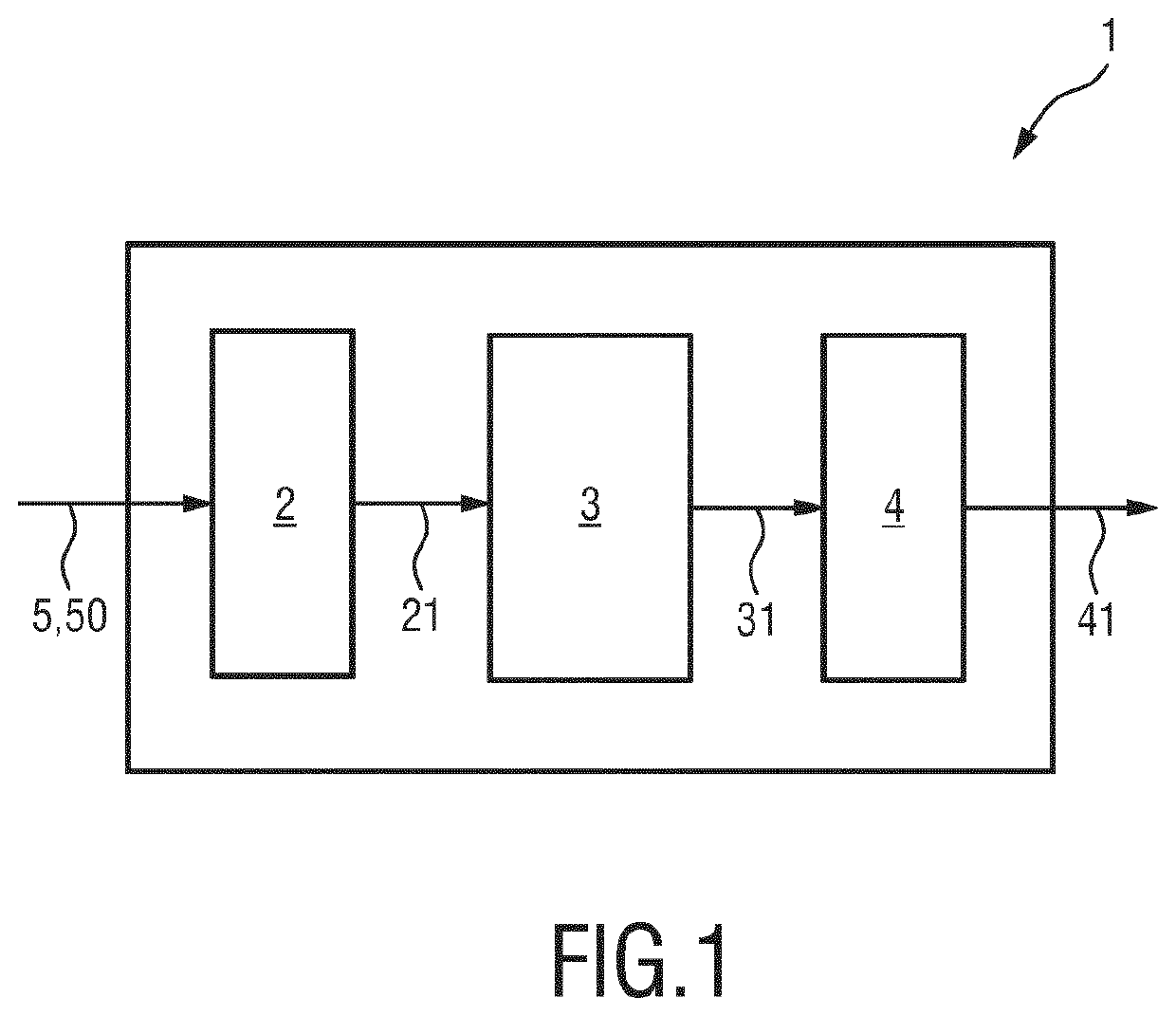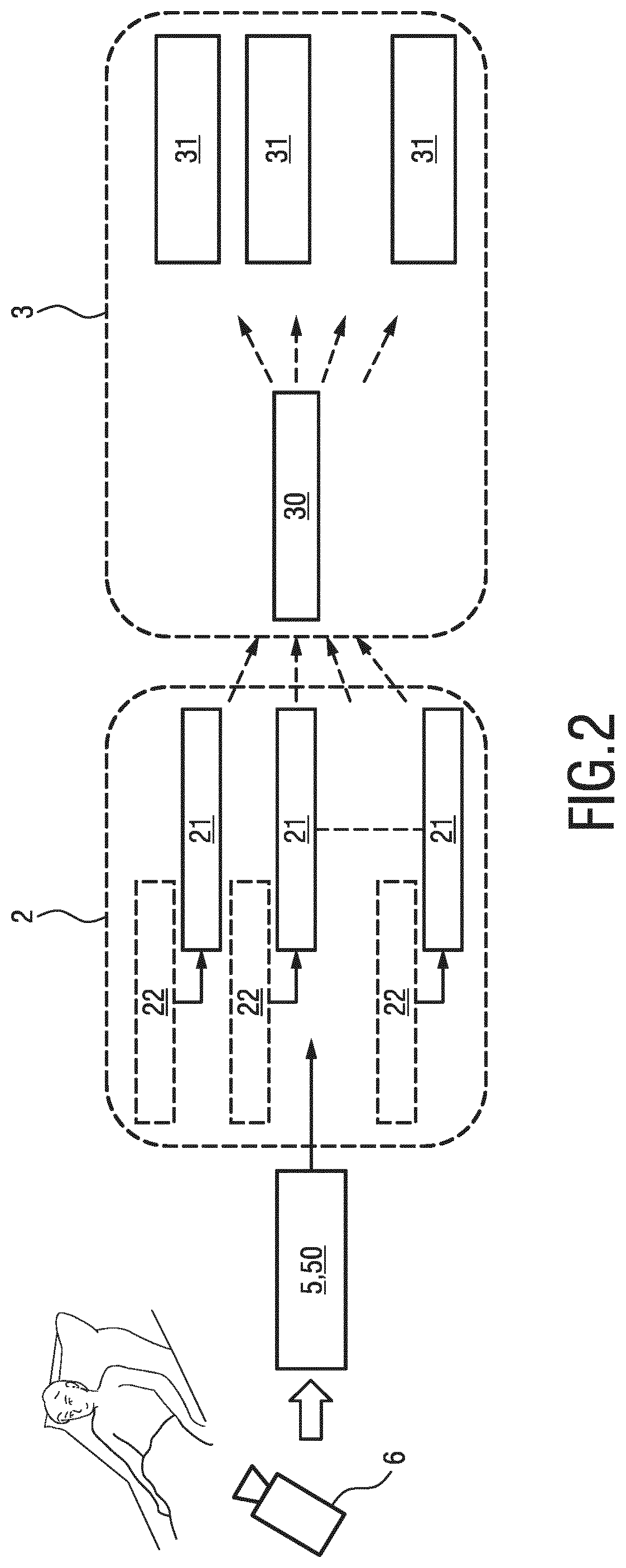Device, system and method for detecting body movement of a patient
a technology for detecting body movement and patient, applied in the field of patient body movement detection devices, systems and methods, can solve the problems of complex and computationally expensive motion estimation algorithms, inability to give granular information to the movement detector using these methods, and the accuracy of the used motion estimator is limited, so as to achieve reliable detecting of body movement
- Summary
- Abstract
- Description
- Claims
- Application Information
AI Technical Summary
Benefits of technology
Problems solved by technology
Method used
Image
Examples
Embodiment Construction
[0055]FIG. 1 shows a schematic diagram of an embodiment of the device 1 for detecting body movement of a patient according to the present invention. The device 1 comprises a projection sweep unit 2, a motion detection unit 3 and an analysis unit 4.
[0056]Using image data comprising depth information 5 the projection sweep unit 2 projects a corresponding image 50 for different viewpoints as if the camera was panned and / or localized elsewhere in the room. Consequently, one or more projection images 21 are obtained. For each of these projection images 21, i.e. the corresponding projection image data, the motion detection unit 3 is configured to detect as a binary decision if motion is present in a respective projection image 21 or not. The motion detection signals 31 thus obtained for the projection images 21 are passed on to the analysis unit 3. In the analysis unit the signals 31 may be combined in any way to detect body movements in the scene in more detail, in particular to localize...
PUM
 Login to View More
Login to View More Abstract
Description
Claims
Application Information
 Login to View More
Login to View More - R&D
- Intellectual Property
- Life Sciences
- Materials
- Tech Scout
- Unparalleled Data Quality
- Higher Quality Content
- 60% Fewer Hallucinations
Browse by: Latest US Patents, China's latest patents, Technical Efficacy Thesaurus, Application Domain, Technology Topic, Popular Technical Reports.
© 2025 PatSnap. All rights reserved.Legal|Privacy policy|Modern Slavery Act Transparency Statement|Sitemap|About US| Contact US: help@patsnap.com



